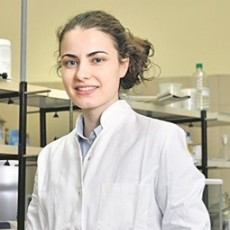Microwave Processing: Effects and Impacts on Properties of Food and Food Waste
A special issue of Foods (ISSN 2304-8158). This special issue belongs to the section "Food Engineering and Technology".
Deadline for manuscript submissions: closed (15 July 2023) | Viewed by 7241
Special Issue Editors
Interests: pharmaceutical technologies and chemistry; green extraction technologies (supercritical carbon dioxide, subcritical water, ultrasound- and microwave-assisted extraction); production of dry extracts using spray drying technique, physical-chemical, biochemical, and pharmacological analyses of obtained extracts; valorisation of (food, agricultural, industry, marine, communal) waste/byproducts by applying green engineering
Special Issues, Collections and Topics in MDPI journals
Interests: extraction; medicinal plants; supercritical carbon dioxide; industrial design; phenolic compounds; response surface methodology
Special Issues, Collections and Topics in MDPI journals
Interests: volatile organic compounds (terpenes, norisoprenoids, aliphatic and aromatic compounds, others); glycosidically bound volatiles; chemical biomarkers; chemical biodiversity; gas chromatography and mass spectrometry; organic chemistry
Special Issues, Collections and Topics in MDPI journals
Special Issue Information
Dear Colleagues,
We are pleased to invite you to submit original articles or reviews to a Special Issue of Foods titled “Microwave Processing: Effects and Impacts on Properties of Food and Food Waste”.
Because it is simple, rapid, and cost-effective, microwave technology is a promising and important technology with various applications in food processing. Additionally, it is recognized as an efficient, environmentally friendly process for the valorization of food waste and food by-products. Therefore, the implementation of the microwave process can represent a significant element of a feasible and sustainable production process. Moreover, this technology can be applied in combination with other processes to improve the process itself and the quality of the product.
Considering the constant improvement and widening of the application of microwave technology, this Special Issue welcomes works from all fields related to the microwave processing of food, food waste, and food by-products.
The Special Issue will cover, but is not limited to, the following scientific subjects:
- Microwave processing of different food source;
- Application of microwave pretreatment;
- Analyses of the impact of microwave process parameters on food product characteristics;
- Valorization of food waste and/or by-products;
- Optimization studies;
- Application of microwave technology with the goal of improving the properties, quality, and safety of obtained food products;
- Coupling microwave processing technology with other technologies;
- Scale-up of the microwave process;
- New applications of microwave technology.
We encourage you to submit your original articles or reviews, and look forward to receiving your work.
Yours sincerely,
Prof. Dr. Jelena Vladić
Prof. Dr. Stela Jokić
Prof. Dr. Igor Jerković
Guest Editors
Manuscript Submission Information
Manuscripts should be submitted online at www.mdpi.com by registering and logging in to this website. Once you are registered, click here to go to the submission form. Manuscripts can be submitted until the deadline. All submissions that pass pre-check are peer-reviewed. Accepted papers will be published continuously in the journal (as soon as accepted) and will be listed together on the special issue website. Research articles, review articles as well as short communications are invited. For planned papers, a title and short abstract (about 100 words) can be sent to the Editorial Office for announcement on this website.
Submitted manuscripts should not have been published previously, nor be under consideration for publication elsewhere (except conference proceedings papers). All manuscripts are thoroughly refereed through a single-blind peer-review process. A guide for authors and other relevant information for submission of manuscripts is available on the Instructions for Authors page. Foods is an international peer-reviewed open access semimonthly journal published by MDPI.
Please visit the Instructions for Authors page before submitting a manuscript. The Article Processing Charge (APC) for publication in this open access journal is 2900 CHF (Swiss Francs). Submitted papers should be well formatted and use good English. Authors may use MDPI's English editing service prior to publication or during author revisions.
Keywords
- microwave processing
- microwave extraction
- food
- food waste
- valorization of food waste and by-products
- optimization
- microwave scale up
- green technology








